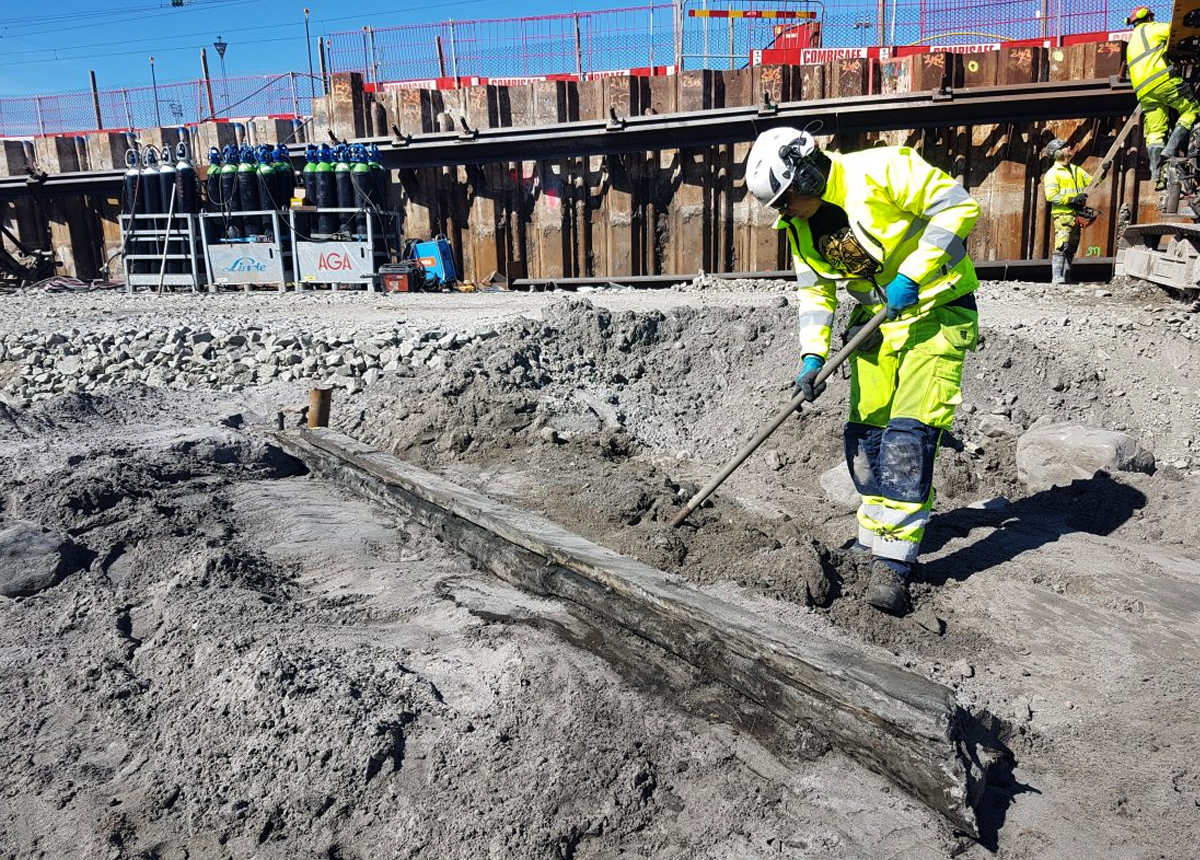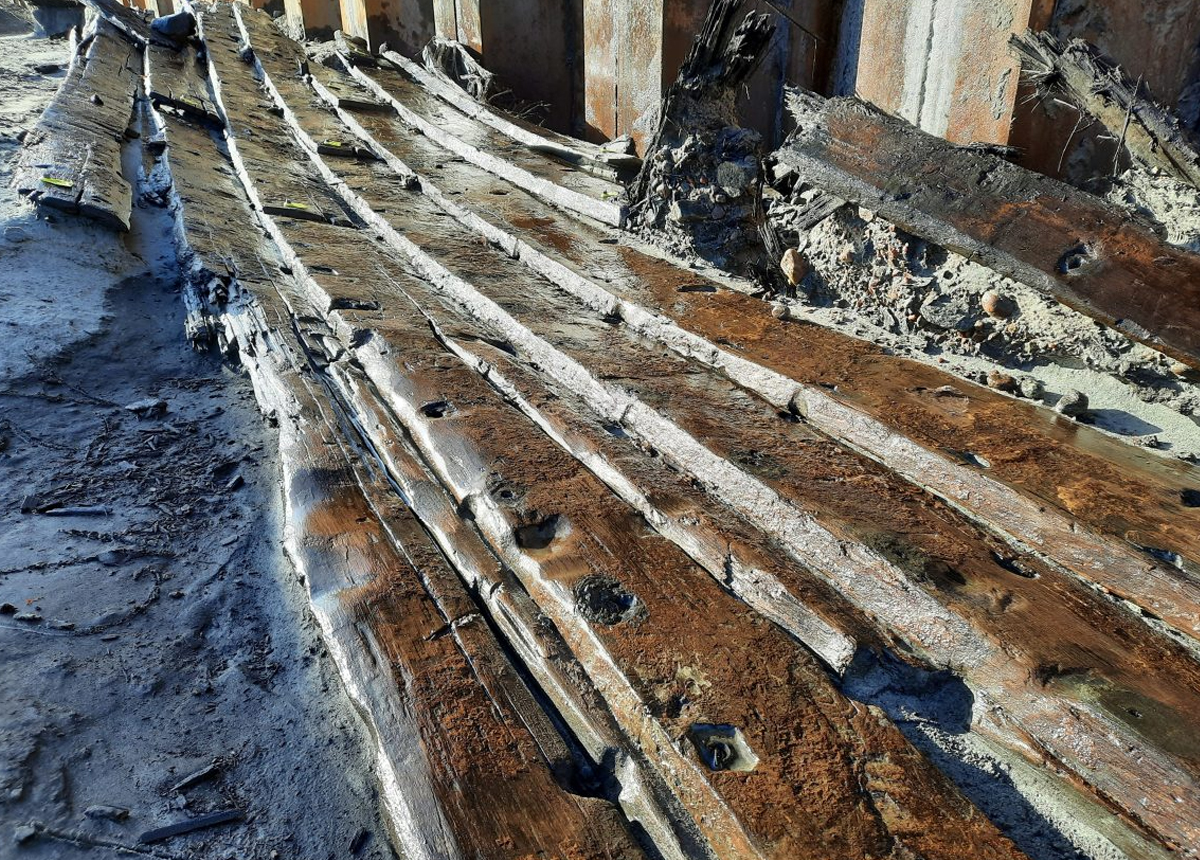Archaeological investigations in advance of the Varbergstunneln project have uncovered historical shipwrecks in Varberg, Sweden.
According to a report by Arkeologerna, six shipwrecks were discovered near Varberg’s original shoreline and medieval harbour defences, dating from the Middle Ages to the 17th century.
Varbergsvraken (wreck) 2 is a clinker-built sailing ship constructed during the 1530’s using locally sourced oak timbers. Clinker ships had overlapped planks giving the vessels a ridged or stepped appearance along the hull, one of the oldest boatbuilding techniques in northern Europe.
One key feature of this wreck are the remains of a berghult, a reinforcing strip on the hull that protected the ship during docking. Traces of burning on the berghult suggest that it may have been damaged or intentionally set on fire before the ship sank.

Varbergsvraken (wreck) 5, is also a clink-built ship, dating from the 17th century. Like Varbergsvraken (wreck) 2, it was built from locally sourced timber and likely sailed between the medieval towns of Varberg and Ny Varberg.
Varbergsvraken (wreck) 6 is a carvel-built ship (planks joined edge to edge) and shows some influence from Dutch shipbuilding techniques. The wreck is the only example found during the excavations that has a preserved keel.
The team is now preparing an analysis of Varbergsvraken 3 and 4 — two 14th-century cogs that may shed new light on medieval maritime trade.
The archaeological works was carried out by the Bohuslän Museum, Visual Archaeology and Cultural Environment Halland.
Header Image Credit : Arkeologerna
Sources : Arkeologerna







